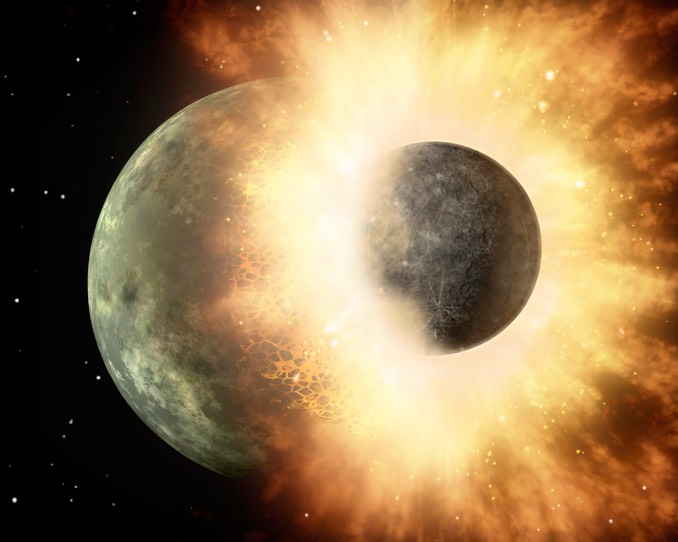
New research supports theories that a collision with a wayward dwarf planet early in the history of the solar system best explains why the Moon’s farside features heavily cratered terrain compared to the nearside with its lower-lying basins.
The stark difference between the two hemispheres was first noticed when spacecraft began beaming back images of the farside for the first time. NASA’s Gravity Recovery and Interior Laboratory – GRAIL – mission in 2012 revealed the crust on the farside is thicker than its nearside counterpart and includes an extra layer of material.
Planetary scientists have debated several theories for the asymmetry over the years, including the merger of two moons very early in the solar system’s evolution or an impact with a dwarf planet later, after the Moon’s crust solidified.
Carrying out a new study based on GRAIL gravity measurements, Meng Hua Zhu of the Space Science Institute at Macau University of Science and Technology and a team of researchers ran 360 computer simulations to test a variety of lunar impact scenarios in an attempt to reproduce the crust seen on the Moon today.
“The detailed gravity data obtained by GRAIL has given new insight into the structure of the lunar crust underneath the surface,” said Zhu, lead author of a paper describing the research in the American Geophysical Union’s Journal of Geophysical Research: Planets.
The best candidate to explain the GRAIL observations is an impact by a large body about 780 kilometres (480 miles) across that slammed into the Moon’s nearside at some 22,500 kilometres per hour (14,000 mph). That’s equivalent to a body slightly smaller than the dwarf planet Ceres hitting the Moon at a quarter of the speed of shooting stars in Earth’s atmosphere.
Another good fit was obtained using a slightly smaller impactor moving slightly faster at some 24,500 kph (15,000 mph).
Either way, according to Zhu, huge amounts of material would have rained back down, burying the farside under 5 to 10 kilometres (3 to 6 miles) of debris, explaining the extra layer of crust detected by the GRAIL spacecraft. The research indicates the impactor probably was not a second moon, but an independent body on an intersecting trajectory.
The modelling also provides an explanation for different levels of isotopes of potassium, phosphorus and other elements on the Moon compared to Earth thanks to material being added to the lunar crust after the Moon’s formation.
“This is a paper that will be very provocative,” said Steve Hauck, a professor of planetary geodynamics at Case Western Reserve University and editor of the AGU’s Journal of Geophysical Research: Planets. “Understanding the origin of the differences between the nearside and the farside of the Moon is a fundamental issue in lunar science.
“Several planets have hemispherical dichotomies, yet for the Moon we have a lot of data to be able to test models and hypotheses with, so the implications of the work could likely be broader than just the Moon.”



